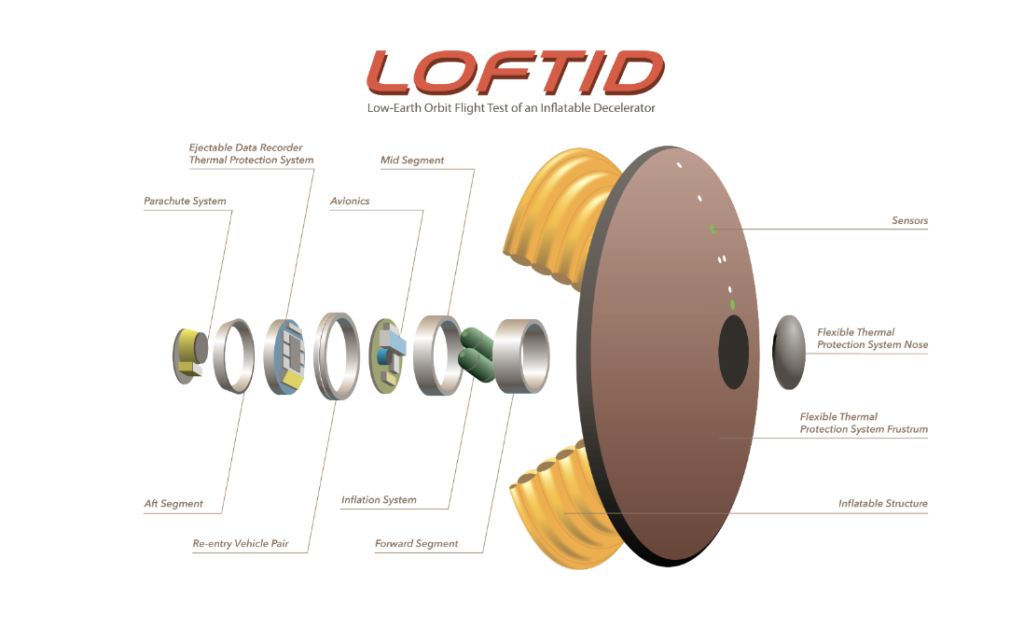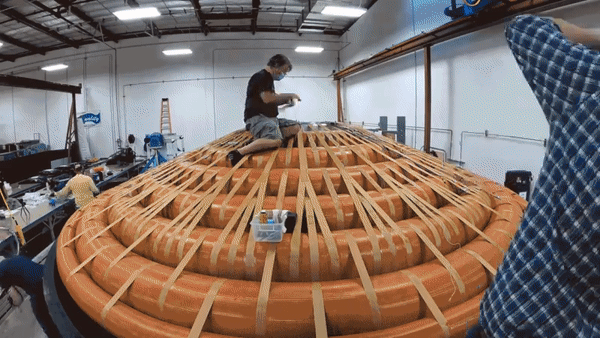Inflatable decelerators are made from ceramic fiber, so they can be packed into a tight space and inflated prior to atmospheric reentry.
NASA is developing a new method for protecting spacecraft from the inferno of atmospheric entry, in preparation for future missions to Mars, and this method involves using what appear to be glorified pool floaties to protect spacecraft from the fiery inferno of atmospheric entry.
There are a lot of things we have to worry about as we travel through space. There is a lot to consider, from the thorny task of entering a planet’s atmosphere to matters as delicate as human hair grounding launches. There is a great deal to consider, including the thorny task of landing on a planet.
The Hypersonic Inflatable Aerodynamic Decelerator (HIAD) project, which is being undertaken by NASA, seeks to reinvent the way that spacecraft are protected from the heat generated during atmospheric entry, when the friction created by the entry process can cause temperatures to rise to nearly 3,000 degrees Fahrenheit.
A NASA press release states that HIAD has been in development for several years now. However, it will have its next application when it is used in a Low Earth Orbit Flight Test of an Inflatable Decelerator, also known as LOFTID. There are several inner tubes of decreasing diameter which are stacked on top of one another to form a cone that can be packed into a small package and inflated when needed, the LOFTID looking like a series of inner tubes stacked on top of one another. In order to create the fabric of the HIAD, ceramic fibers are woven together to create the outermost layer, which is composed of ceramic fibers.
In November, LOFTID will be launched aboard a United Launch Alliance Atlas V rocket alongside NOAA’s Joint Polar Satellite System-2, which will provide a true test of its ability to survive atmospheric re-entry when launched aboard an Atlas V rocket. In order to determine whether the design of the LOFTID is successful in slowing down and protecting sensitive payloads from the heat of reentry, after the NOAA payload separates from the Atlas V upper stage, we will inflate and reenter the atmosphere after the NOAA payload separates from the Atlas V upper stage.
As a result of the suborbital tests, the system has come in at a speed of approximately 5,600 miles per hour or 2.5 kilometers per second, which is already quite difficult, according to NASA press release. A LOFTID aeroshell lead at NASA’s Langley Research Center in Hampton, Virginia, Hughes is responsible for the development of LOFTID. With LOFTID, we will be coming in at nearly 18,000 miles per hour, which is 8 kilometers per second, rather than 18,000 miles per hour. As a result, the energy needed to do that is nine times greater than if we were going three times as fast.”

Source: NASA
LOFTID, as NASA points out, is a system that can be used for a variety of missions that can include a wide variety of instruments, and it can be scaled to fit different missions based on the mission’s scope. Nevertheless, NASA specifically identifies its interest in how this technology might be able to help to protect future crewed missions to Mars in the long run.
#nasa #engineers #space #heatshield #mars #mission #inflate #LOFTID
















